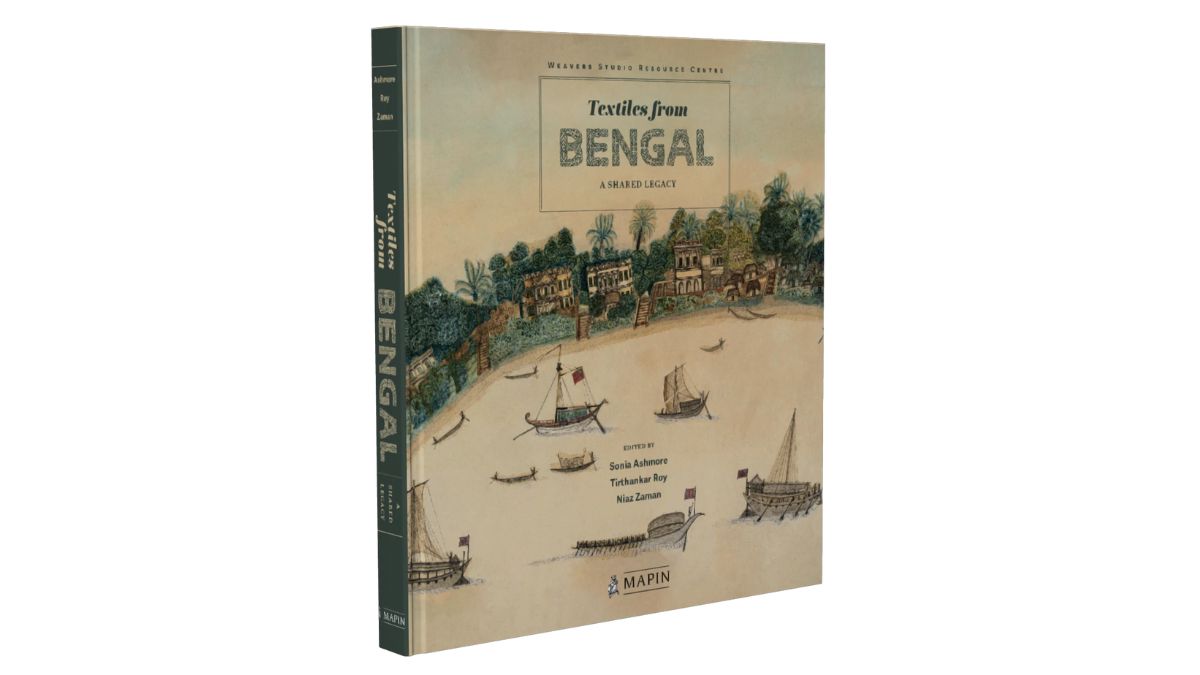Weaving a shared legacy: 'Textiles from Bengal' unravels the rich history of the two Bengals

“It's all about carrying your identity with pride, right?” actor-singer Diljit Dosanjh told The New York Times as he made his Met Gala debut with a bang. Every detail of his ensemble—from the ivory-gold sherwani and jewel-studded, feathered turban to the lion-headed kirpan (sword)—oozed regality as well as his Punjabi heritage, eliciting awe at both home and abroad.
Dosanjh's 'carrying your identity' moment powerfully highlighted the power of garments, which go beyond utility, carrying stories, history, and culture within its folds.
This is starkly evident in 'Textiles from Bengal: A Shared Legacy', an extensive and strikingly beautiful book that documents the rich textile history of the two Bengals from the 16th to the 20th century. The book is co-edited by Tirthankar Roy, Sonia Ashmore, and Niaz Zaman, and published by Mapin Publishing.
First things first: 'Don't judge a book by its cover,' they say, but it proves to be the opposite in the case of 'Textiles from Bengal: A Shared Legacy'. In fact, the coffee table book carries a rich repository of stunning pictures that guide you as the essays by 34 experts inform you. It's not an easy book and can be overwhelming at times, but the premise, accompanied by the pictures, keeps you hooked.
ALSO READ | Winds of Change: A Reflective Look at Rami Chhabra’s 'Becoming the Storm'
Along with the carefully selected pictures, what's commendable about the book is its expanse, which goes much beyond the 'jamdani' and 'kantha' of Bengal. It focuses on Bengal's famed cotton and silk, but also jute and indigo, and how climate, political developments and colonialism impacted the region's textile heritage. While Bengal's muslin became a hit in the West, textiles also became central during the Swadeshi movement, which the book explores deeply.
While the book touches upon themes that might be better known in public, it also acquaints readers with some unknown or little-known aspects. For example, Bengal has had a rich tradition of 'suchichitra', or embroidered paintings.
While India has had an oral history, it has lacked the tradition of written history for the most part, which holds in the case of Bengal's textiles as well. While the book makes a mark in undoing that, it contains a section on songs by women on Bengal's textile traditions.
"The neighbours came to my house to ask me to weave a sari
Standing on the door, Rani calls out to me and says-
O weaver, make me a beautiful bridal scarf," reads a song.
While Bengal's textiles have endured several changes, from rivers changing course to industrialisation, a major blow was dealt by the Partition of India in general, and Bengal in particular.
ALSO READ | ‘Fifty Year Road’ review: A personal history of India penned by a politically conscious Indian
It makes this book all the more important as it makes you see culture in the continuum, which cannot be withheld within borders, and no singular event can undo it, and whether you are a fashion enthusiast or a history buff, 'Textiles from Bengal: A Shared Legacy' is as interesting as it is important.
Textiles from Bengal: A Shared Legacy
Co-editors: Tirthankar Roy, Sonia Ashmore, Niaz Zaman
Publisher: Mapin Publishing
Pages: 360
Price: ₹4,950
Books Review